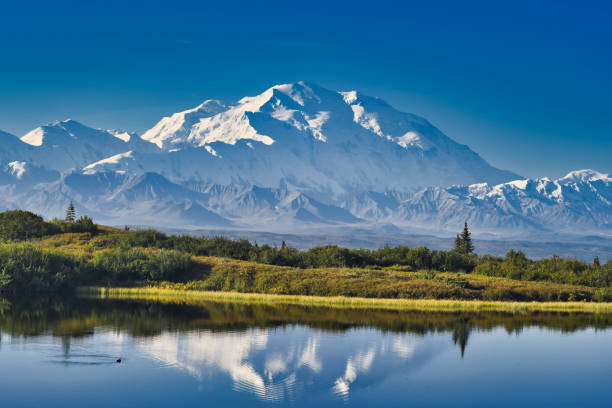Mt. Denali, located in the breathtaking wilderness of Alaska, is a name synonymous with awe-inspiring natural beauty and challenging alpine endeavors. As the highest peak in North America, Denali commands respect not only for its sheer size but also for its rich history and the treacherous conditions that climbers must face to reach its summit. But just how high is Mt. Denali? In this article, we’ll explore the exact elevation of Denali, how it’s measured, and delve into the mountain’s historical, geographical, and cultural significance.
SEE ALSO: What Muscles Are Used in Mountain Biking
The Exact Elevation of Mt. Denali
The official elevation of Mt. Denali is 6,190 meters (20,310 feet) above sea level. This elevation, certified by the United States Geological Survey (USGS), was determined using modern methods of satellite-based Global Positioning System (GPS) measurements. Interestingly, Denali’s height has been a subject of revision over time due to advancements in measurement techniques.
Initially, in the early 1950s, Denali’s height was recorded at 6,194 meters (20,320 feet) using photogrammetry, a technique that involved analyzing photographs taken from airplanes. However, with the advent of more accurate satellite technology, a 2015 survey adjusted the elevation to the current 6,190 meters (20,310 feet). This difference might seem minor, but it reflects the precision with which modern technology can measure the earth’s topography.
Mt. Denali’s Location and Significance
Mt. Denali is located in the Alaska Range in the U.S. state of Alaska. It is the crown jewel of Denali National Park and Preserve, a vast area of pristine wilderness that attracts adventurers and nature enthusiasts from around the globe. Denali holds the prestigious title of being the highest peak in North America, making it one of the Seven Summits, a term used to describe the highest mountains on each of the seven continents.
The mountain’s immense height is further emphasized by its prominence. Denali rises about 5,500 meters (18,000 feet) from its base, which is among the largest vertical rises of any mountain on Earth. This prominence contributes to its majestic appearance and the challenges it presents to climbers.
The Difficulty of Climbing Mt. Denali
Climbing Denali is not for the faint-hearted. Its extreme altitude, coupled with harsh weather conditions, makes it one of the most challenging mountains to summit. The mountain’s location near the Arctic Circle subjects it to unpredictable weather, including severe cold, high winds, and heavy snowfall.
The standard route, known as the West Buttress Route, was first successfully climbed in 1951 and remains the most popular path to the summit. Despite being the “easiest” route, it is still an arduous journey that requires climbers to be in excellent physical condition, possess strong mountaineering skills, and be prepared for the potential hazards of crevasses, avalanches, and altitude sickness. The climbing season typically runs from May to July, when the weather is marginally more stable, but even then, conditions can be treacherous.
Notable Features and Landscapes
Denali’s landscape is as varied as it is beautiful. The mountain is surrounded by glaciers, some of which are among the largest in North America. The Kahiltna Glacier, for instance, is the longest glacier in the Alaska Range, stretching over 71 kilometers (44 miles). These glaciers, along with the towering peaks of the Alaska Range, create a stunning and formidable environment.
The Muldrow Glacier, located on Denali’s north side, is another prominent feature, known for its historic significance as part of the first ascent route in 1913. The mountain’s southern slopes are characterized by steep, rugged terrain, making them particularly challenging for climbers.
Denali’s grandeur is not just in its height but in the vast, untouched wilderness that surrounds it. The national park is home to a diverse array of wildlife, including grizzly bears, caribou,wolves, and golden eagles, making it a paradise for wildlife enthusiasts and photographers.
Conclusion
Mt. Denali is much more than just the tallest peak in North America; it is a symbol of natural majesty and a beacon for adventurers worldwide. With an official elevation of 6,190 meters (20,310 feet), Denali stands as a testament to the power and beauty of nature. Whether you are a climber aspiring to reach its summit or a nature lover drawn to its breathtaking vistas, Denali offers something for everyone. Its history, cultural significance, and the challenges it presents make it one of the most iconic mountains on Earth, a true “High One” that commands respect and admiration.

